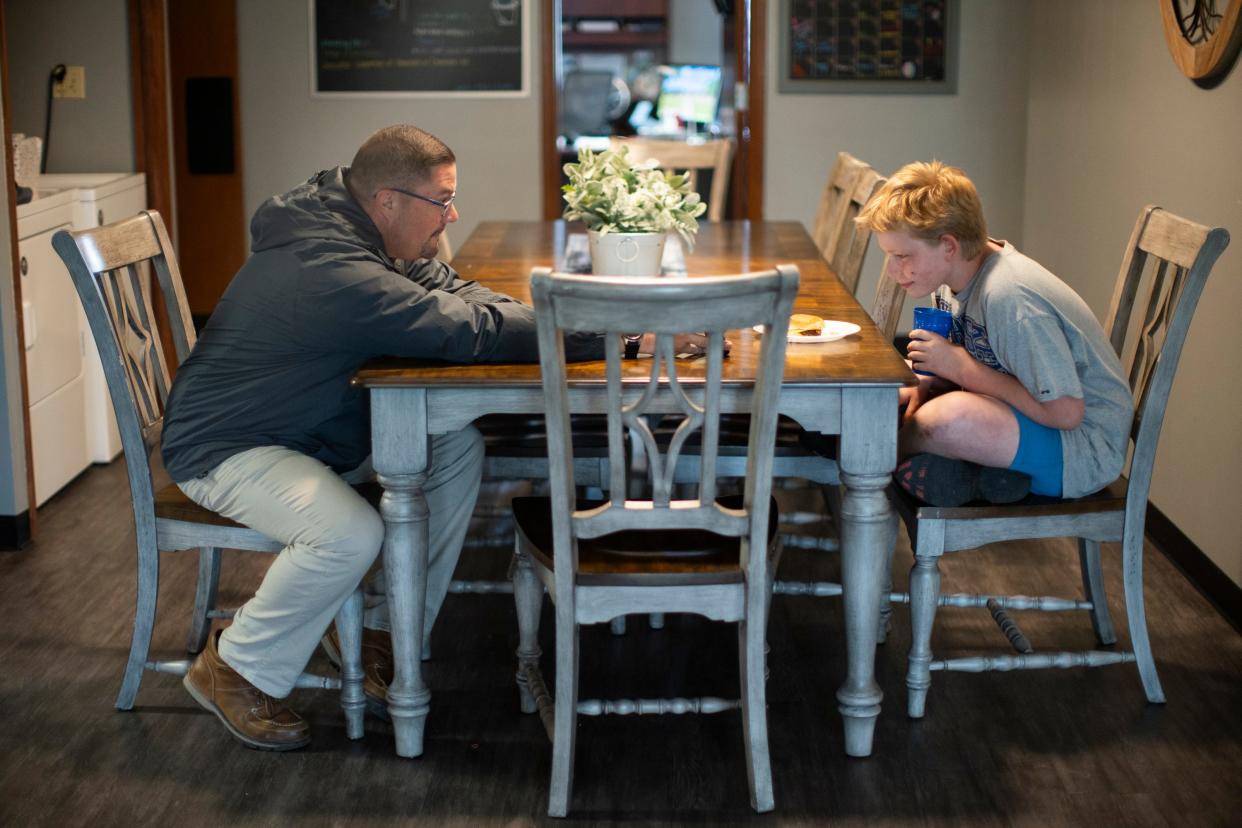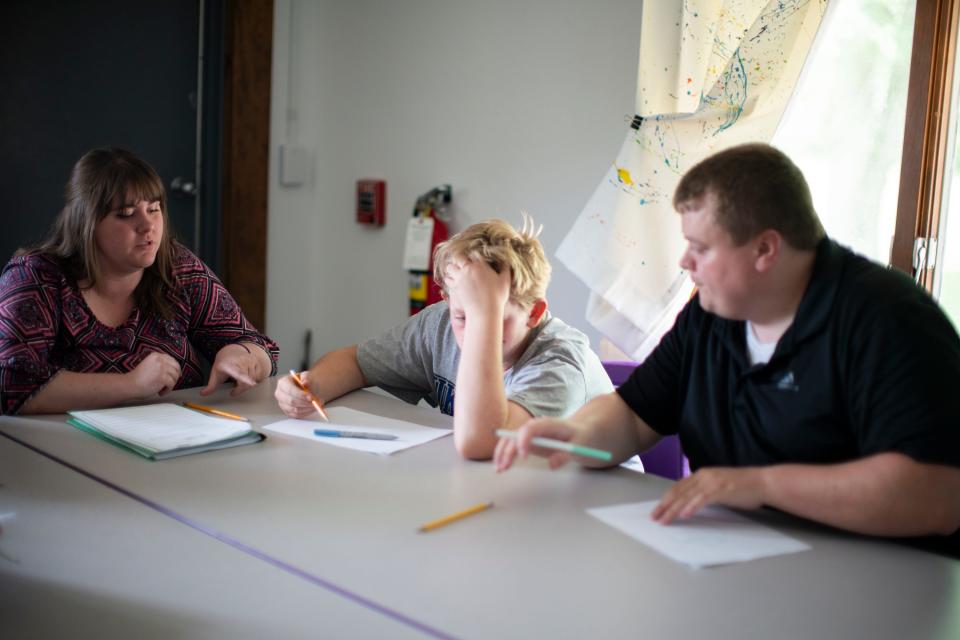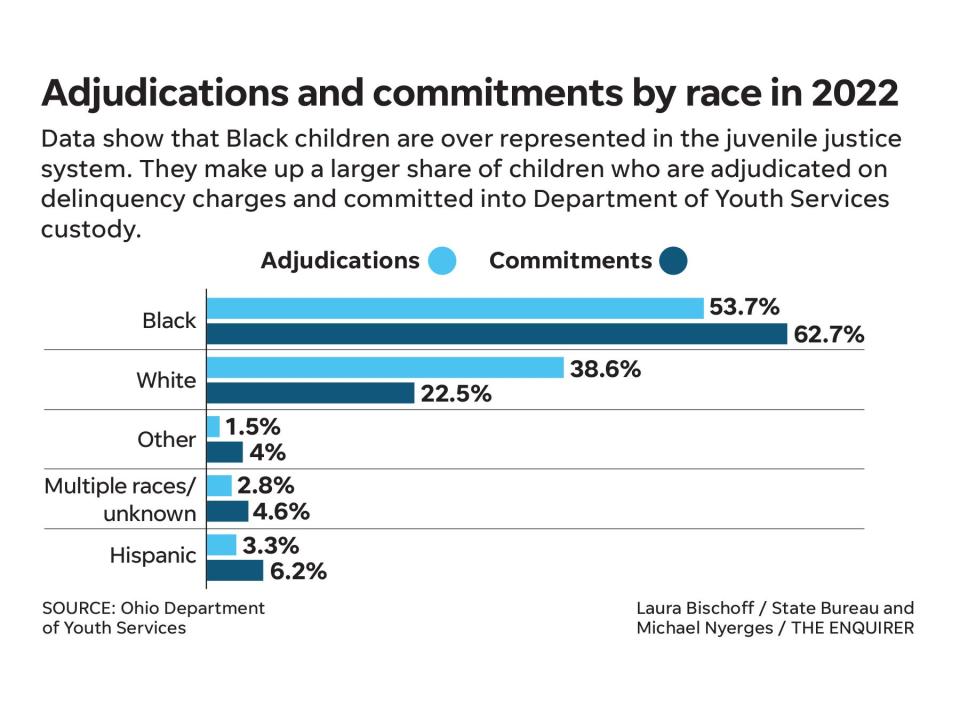'We need to break the cycle and give kids hope.' How Marion County closed its youth lockup

When J.E. first showed up at the Marion County Family Resource Center, the scrawny 13-year-old suffered from multiple traumas, had been taken from his parents via child protective services and was facing arson charges in juvenile court.
J.E. slept on top of the refrigerator, lacked basic hygiene and desperately needed mental health care.
"He showered here daily. He did laundry here daily. He ate here daily, slept here. I mean, I think everything a normal youth would do, he experienced it all here, maybe for the first time, honestly," said Don Leffler, operations administrator at the center.
The resource center, which replaced the county detention center, provided structure, intensive intervention and services to get J.E. on a path to normalcy. The teen is now in foster care, earning good grades and playing football. "He's thriving," Leffler said.
Leffler points to J.E. as a success story for the center, which seeks to divert kids from the juvenile justice system and provide needed services.

"We want this to be a safe haven, a positive environment for them. And we're going to do everything we can to get them on the right path," said Leffler, a former police officer. The center offers a kitchen stocked with snacks, a washer and dryer, art supplies and space to create, a calming room, family meeting space, a basement rec room with pingpong and pool and more. It also provides counseling for the kids and parenting classes for adults.
It's expensive: $600,000 a year to help up to 15 kids at a time. But it's less than the state spends to incarcerate one child for a year: $236,000.
Nearly a decade ago, Marion County embraced a new way of handling juveniles who get into trouble. Instead of lockup, low-level offenders are funneled into programs to help them sort out their problems and establish better habits and skills. The Family Resource Center takes a holistic approach, working with local law enforcement, schools, courts, child protective services, mental health care providers and families.
The new approach worked so well that the county shut down its juvenile detention center in October 2019 and opened the resource center in February 2021. Marion County contracts with nearby counties for detention beds needed for teens facing charges for guns or violent felonies.
[ Reporters with USA Today’s network of Ohio newspapers spent eight months investigating the state's juvenile justice system. Consider supporting their work with a subscription. ]
"We just cycle kids all the way through the adult prison system and there's no interruption of that," said Marion County Family Court Judge Rhonda Burggraf, a former prosecutor. "So, what we're trying to create is an interruption. Kids who otherwise might end up in the prison system need some hope that they can do something different with their lives and not end up in the prison system."
Irma Browning, 68, of Marion, has custody of her 14-year-old great-grandson. Both of them are receiving services from the center after episodes of domestic violence in their household. The court ordered Browning to take parenting classes and her great-grandson, who faced domestic violence charges, has received counseling and other services. Soon, though, he'll move to a residential facility for more intensive help, Browning said.
"I hope that this will turn him around and he'd make better choices and snap out of the things he's doing and realize you can't always get what you want in life," Browning said.
Her fears for her great-grandson?
"That he's going to grow up and wind up in prison a lot."

The myth of the juvenile crime wave
Ohio is not seeing a massive crime wave driven by dangerous teens.
“The public perception is that we’re in a youth crime wave, however, youth arrests have dropped by 80% since the peak in 1996," said Leah Winsberg, an attorney for the Children's Law Center. “Since 2000, youth have accounted for a small percentage of violent crime arrests each year and the share of crime committed by youth has fallen by more than half.”
Consider these data points:
The number of juvenile delinquency cases in Ohio courts dropped to 35,426 in 2022, down 50% from 72,078 in 2013, according to state records.
The number of youths adjudicated on felony charges in Ohio dropped to 3,182 in 2022, down nearly one-third from 4,636 in 2013. The rate per 100,000 has also declined to 1.2 in 2021, down from 1.7 in 2017.
The number of juveniles sent to the state youth prisons is also down, from 459 in 2013 to 263 in 2021.
The number of juvenile arrests for violent crime – murder, robbery, aggravated assault – has been declining across the nation for nearly two decades, according to U.S. Department of Justice data. Nationwide, violent crime arrests involving youths is 78% below the 1994 peak. And overall, the youth proportion of violent crime arrests fell from 14% in 2010 to 7% in 2020, according to federal data.
One troubling trend: The number of youth arrests for murder only dropped 8% from 2010 to 2020 – a drop but not as big a drop as seen with other crimes. And there were 1,780 youth victims of homicide in 2020 – 30% more than in 2019 and 46% more than 2013, which marked a low.

Those teens who do go to an Ohio Department of Youth Services prison face tough odds.
Once released, they have nearly a six-fold increase in the likelihood they’ll die an early death – most often homicide, suicide or overdose, according to a study of 3,600 Ohio youths who were incarcerated between 2010 and 2017.
Among those released from state supervision, 43.2% of them return to the youth prison system or end up in adult prisons within three years.
Read the full report: Find a summary and link to each part of our investigation into Ohio's youth detention facilities
Keeping kids out of lockups
The best scenario for kids who get in trouble for delinquency? Steer clear of lockup.
Research shows that arrest, court appearances and detention increase the risk of bad outcomes for kids, such as dropping out of school and getting into more trouble.
“The best investment you can make is on the front end in terms of providing youth the services that they need in the community, in the least restrictive environment possible, that are culturally competent and developmentally appropriate and trauma responsive," said Winsberg, of the Children's Law Center. "Those are going to give you the best bang for your buck. They’re cost effective and they have high success rates. We’re doing some of that in Ohio but we’re not doing enough of it.”
The Annie E. Casey Foundation started the Juvenile Detention Alternatives Initiative in 1992 to reduce the use of local detention. Marion County adopted the approach in 2013.
Nineteen of Ohio's 88 counties use this alternative approach, including those in the biggest metro areas. The 19 counties hold 61% of Ohio's 9- to 17-year-old children.
Nationwide, more than 200,000 young people are admitted to detention centers each year. Compared to kids kept at home or in an alternative placement pre-trial, detained youths are more likely to be formally charged, adjudicated and sent to prison, according to the Casey Foundation. They're also more likely to suffer exacerbated health problems and disruptions in their education.
More than 300 jurisdictions across the country have embraced the Juvenile Detention Alternatives Initiative approach.
Nate Balis, director of the juvenile justice group at the Casey Foundation, said it's about bringing people together, studying data and working on the front end when kids first enter the justice system.
Balis said Ohio is known for being a national leader for its creative alternatives to keeping children out of detention.
Ohio has dramatically shifted its approach to juvenile justice, moving away from incarcerating children except for violent offenses. Twenty years ago, Ohio detained children for truancy, curfew violations, running away and underage drinking.
Some states have closed their youth prisons, shifting to confinement options that are closer to children's homes. California shut its juvenile prisons in July.

'Tough on crime' falls more heavily on Black kids
Youth detention and incarceration nationwide dropped 77% from 2000 to 2020, according to the Sentencing Project. But Black kids are still four times more likely to be locked up than their white peers.
Black kids are more likely than white kids to be arrested and then be detained. White kids are more likely to be diverted from the formal justice system and when found delinquent, more likely to receive probation or informal sanctions. Black kids are more likely to be incarcerated, according to the Sentencing Project.
Ten years ago the Casey Foundation came up with strategies to focus on "the deep end" of the juvenile justice system − kids who end up in youth prison and those who face bind over to adult court. Black youths are disproportionately represented in the deep end.
This article originally appeared on The Columbus Dispatch: What are possible solutions to juvenile prison crisis in Ohio?

